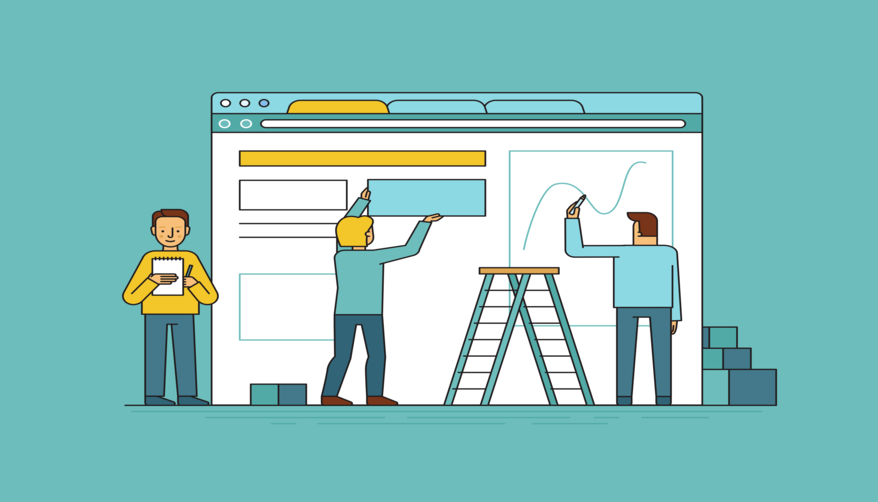The Finale!
Once we finalize the project discovery phase details, this is shared with the client. Mobikasa collaborates closely with the client project team to communicate where the project stands and plan to proceed further.
The development team starts work on the main stages as per the project plan. The design phase in website/mobile application development usually involves a pre-design stage, design research, and four other main stages: sketching, wireframing, visualization, and slicing. Here we demonstrate these stages during the design and development phases. Have a look!
Sketching

Sketching is brainstorming. Our graphic designers come up with dozens of ideas and choose the best options. They don’t make an all-inclusive interface for each idea but outline the final product’s visual concept.
Wireframing

This is an important stage for visualizing what the final product (Website/Mobile Application) will look like. Wireframing plays an extremely important role here and the following is done:
1. Put requirements together
2. Create the structure of the future website/mobile application
3. Define the future appearance and set of user interface elements
4. Design website/ mobile application navigation
5. Create clickable dynamic prototypes to understand the user interaction
Understanding the website’s structure allows designers to define the necessity of additional research and choose an optimal technological solution for further development. Mobikasa project team gets acquainted with how the website/ mobile application will work and look, estimate the time and project plan for the development phase, and finally gives recommendations to the Client, in accordance with technical requirements and future capabilities.
Visualization & Style Guide

This stage is the visualization and branding of the website’s interface elements. Here, the website/ mobile application gains visual identity. The mobile/ web development team estimates the steps based on the approved design and project documentation.
A style guide can efficiently reduce the time devoted to the visualization stage. It is a file containing all the unique elements, including interface components, spaces, and typeface sizes present in the final product. In short, a style guide represents a set of rules our designers follow to maintain consistency.
Slicing
Slicing is a purely technical phase that involves preparation for implementation. This standard procedure begins after the approved start of the development process. Accurate slicing means the quality of interface development. After slicing, everything follows the usual approach. Developers will finally implement the design and deliver the product on time to the clients, who in turn will give feedback that will influence future changes.
These stages of development adjust requirements so that the client fully understands all efforts, and materials required to start the full-fledged development phase. It’s essential to pay close attention to avoid risks during the development stage, testing and launch.
In the end…
We move forward to one of the most critical stages in the project discovery phase – The establishment of milestones, detailed budget estimates, and scope of work. During this stage, we identify any bottlenecks that may delay the project or lead to issues and create a comprehensive project timeline.
Along with that, we present a detailed budget that highlights all costs likely to be incurred throughout the duration of the project. Our project manager presents the timeline and the budget to the clients and gets them to sign off on it.





